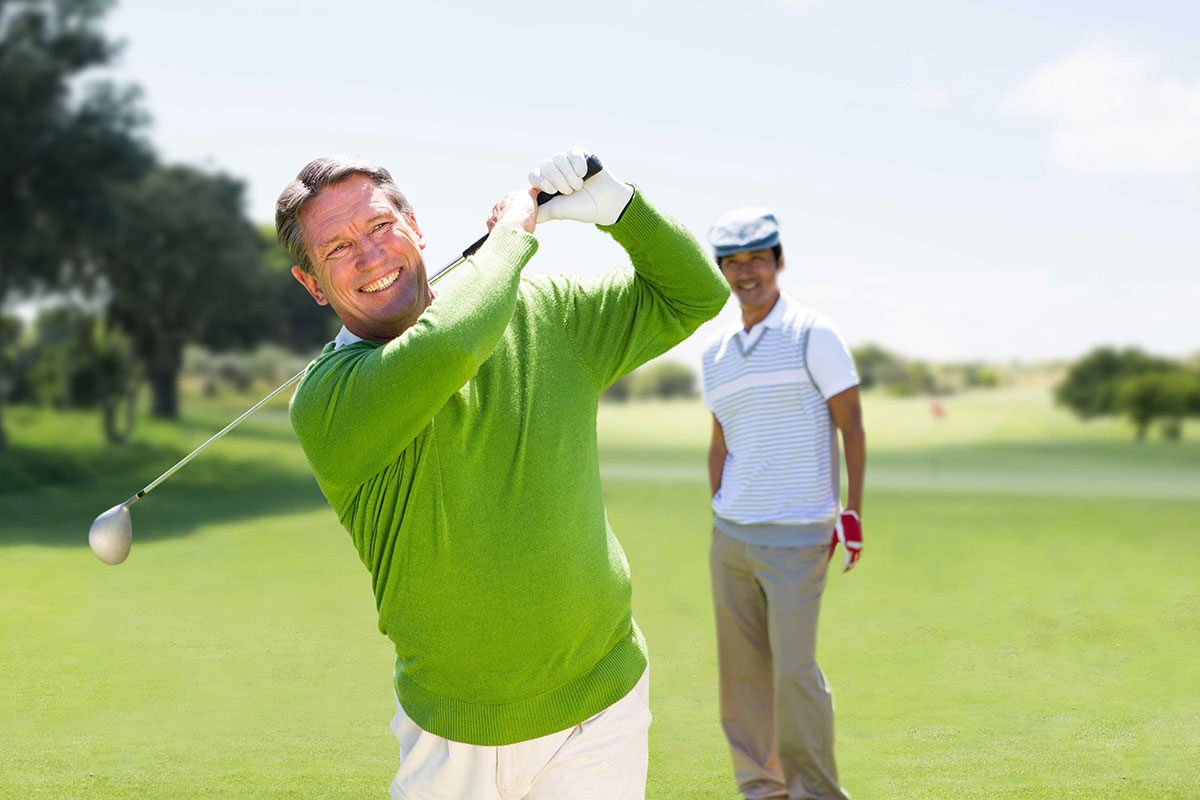The word “Fore!” has traditionally been used to tell surrounding golfers to seek safety from the path of a misdirected shot. You can think of this article in the same way as the word “fore” and use the following advice to seek safety so that you can avoid injuries that might otherwise keep you from your favorite pastime. Now, I’m not going to lie to you – I can’t guarantee that my advice will shave 10 strokes off of your game. But I will tell you this: If you’re aware of the common injuries that sideline golfers, and if you do some simple things to prevent them, you may get to spend a lot more time on the course this season. (And yes, if you take my advice, feel good, and avoid injuries while golfing, it may actually improve your game…)
Take it from an ex-wrestler – many of us think that golf is a relatively low-level sporting activity, and that golfing injuries are few and far between. This is, however, not the case. Golfing injuries are actually quite common (especially if you’re on the course with a guy like me who doesn’t always know where the ball is going to go). With the spring thaw finally here, and with many of you “licking your chops” to get back onto the golf courses here in Michigan, it’s a good time to arm you with a little sports medicine knowledge.
Five of the most commonly affected areas in the body are the shoulder, elbow, wrist, low back, and knee.
Rotator Cuff Problems
The rotator cuff is a group of four muscles in the shoulder that is responsible for much of your shoulder’s function. Unfortunately, tremendous stresses are placed on the rotator cuff during a typical golf swing. The rotator cuff is prone to acute strains and tears, as well as overuse injuries that result in tendonitis or bursitis. The best cure for rotator cuff problems is prevention. Some simple shoulder stretches and strengthening exercises, as well as a good warm up (don’t hit the long ball your first swing), can keep your shoulders in commission.
Golfer’s elbow
Golfer’s elbow refers to inflammation and overuse of the inner part of the elbow. The muscles that originate here are responsible for flexing the wrist and rotating the forearm – integral components of the golf swing. One of the best ways to avoid elbow problems (besides cutting back on golf) is to strengthen the forearm muscles and slow the swing so that there will be less shock in the arm when the ball is hit. Some simple and beneficial exercises include using a “grippy ball,” doing wrist curls and reverse wrist curls with a light weight, and performing simple wrist stretches.
Tendonitis of the Wrist
Wrist tendonitis is very common. It results from “stressing out” the tendons that control the hand and fingers. We all know that a great swing relies on the coordinated activity of the legs and trunk, as well as the arms. Although the wrist is one of the final links in this kinetic chain, it’s an important one that deserves attention.
Low back pain
Another common complaint among golfers – low back pain – can be caused by a poor swing. The rotational stresses of the golf swing can place considerable pressure on the spine and muscles. Poor flexibility and muscle strength can cause minor strains in the back that can easily become severe injuries. Low back health requires a balance of strength and flexibility. Remember – it’s not just the muscles of the low back, but also the abdominal and hip muscles that are important (together these are called your “core muscles.”) Once again, you can avoid a lot of grief with some simple stretching and strengthening exercises.
Knee Issues
Take it from Tiger Woods and John Daly – knee injuries can occur in golfers. In my practice, the most common knee injuries that I see in golfers are: 1) Aggravation of the knee from the twisting motion, or 2) Tearing of the meniscus (bumper cartilage) because the twist was too much. Most golfers do not “blow out” the ligaments of their knee like Tiger did, but the golf swing certainly does provide enough torque to injure or inflame the knee.
Prevention and Treatment
So, before your next round of golf – especially at the beginning of the season – engage in some simple stretching exercises, and then get a bucket of balls and hit them at the driving range – warming up is very important. Additionally, a bad golf swing can put a lot of extra stress on the parts of the body that we just talked about. Don’t be afraid to enlist the help of a professional who can instruct you in the proper mechanics of the golf swing. A good warm-up and a good swing, combined with good over-all fitness, may very well prolong your golf season. In the end, staying fit and doing some simple exercises should prolong your career and improve you over-all health.
If you’ve already hurt yourself, remember that some simple things like rest, ice, compression, elevation, and anti-inflammatory medicine can help most minor injuries. If you’ve really hurt yourself and it’s not getting better with the “simple stuff” like RICE (Rest, Ice, Compression, and Elevation), ibuprofen, and a brace or compression sleeve– get it checked out by an MOS specialist.
Dr. Joseph Guettler is an orthopedic surgeon who specializes in sports medicine. He is a proud member of the MOS Team. For more information, go to miorthosurgeons.com.

